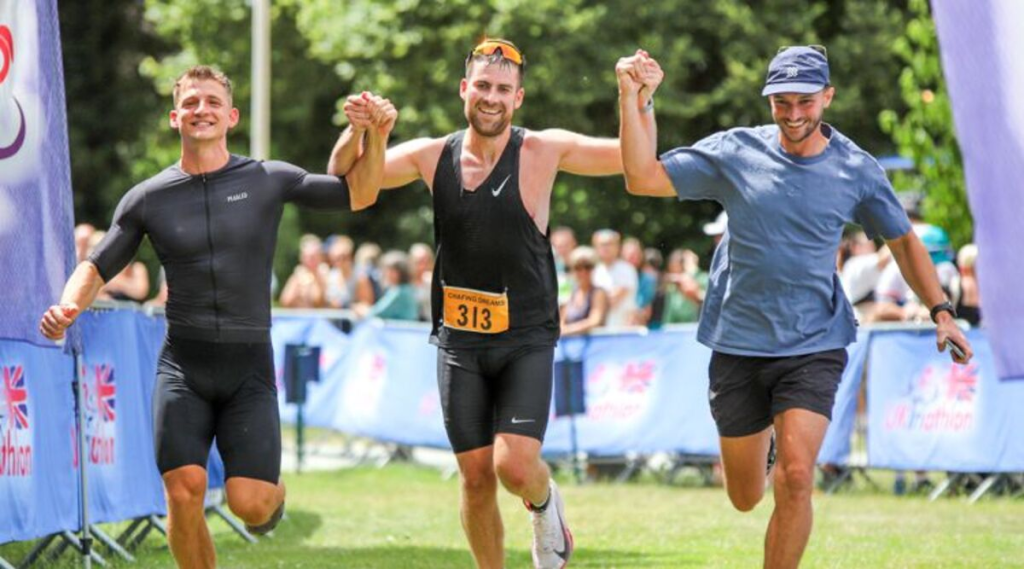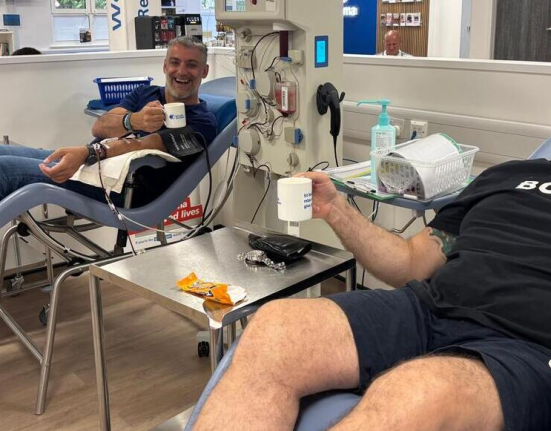A rite of passage
Triathlon, once a niche sport for elite endurance athletes, has gone mainstream.
The sport has transformed into one of the UK’s fastest-growing physical challenges – and, for many, a personal milestone.
Among younger generations, it is increasingly seen as a rite of passage: a test of resilience that blends swimming, cycling and running into one gruelling but addictive package. For people in their 40s, 50s and beyond, the sport is offering something equally powerful – a sense of renewed purpose and direction.
This cultural shift is reflected in entry lists across the country. From sprint-distance community events to full Ironman races, thousands of newcomers are signing up each year. Triathlon England, the sport’s national governing body, has reported steady membership growth, particularly among 18 to 30-year-olds. Social media is playing a key role, with finish-line photos, medal displays and training updates fuelling a cycle of inspiration that draws more people in.
Why it’s catching on
Part of triathlon’s appeal lies in its variety. Unlike single-discipline sports, training is spread across three activities, reducing the risk of repetitive strain and keeping participants mentally engaged. The format also accommodates different strengths – a strong cyclist can make up ground on the bike, while confident swimmers can get an early lead.
The rise in popularity coincides with a broader surge in mass-participation events in the UK. Running booms after the pandemic, coupled with a shift toward “experiential” fitness, have created fertile ground for triathlon’s growth. Its social aspect is another draw: club sessions, group rides, and open-water swims help forge tight-knit communities.

Younger generations finding their challenge
For many in their 20s, completing a triathlon is becoming a personal benchmark, much like running a first marathon. It offers a tangible, measurable achievement that stands out in a digital-first world. University sports clubs are reporting greater interest in multisport disciplines, and local triathlon festivals now feature beginner-friendly relay formats where friends can share the swim, bike and run.
That accessibility is vital. Sprint triathlons – typically a 750m swim, 20km bike ride and 5km run – give beginners a taste of the sport without requiring extreme training volumes. These shorter formats are proving to be gateways, with many participants moving on to Olympic or half-Ironman distances in subsequent seasons.
A new direction in midlife
While younger athletes often chase personal bests, many older participants are drawn by the lifestyle change triathlon demands. Structured training provides a framework for physical health, mental focus and time management. In midlife, this structure can be transformative, offering both discipline and community.
For some, it’s about rediscovering competitive spirit. Others find the challenge provides a healthy counterbalance to high-pressure careers or family commitments. The sport’s emphasis on endurance over raw speed also means that, with smart training, athletes can compete – and improve – well into their 60s and 70s.
From lakes to city streets
Britain’s triathlon calendar now features a wide spectrum of events. Scenic races in the Lake District, the Scottish Highlands and along the Welsh coast draw those seeking adventure and challenging terrain. Meanwhile, city-based events such as the London Triathlon bring the sport into urban settings, with closed-road bike routes and swims in docks or rivers.
These events are supported by a growing infrastructure: more open-water swimming venues, better bike hire and maintenance services, and a wealth of training plans available online. Specialist coaching businesses are thriving, catering to everyone from complete beginners to age-group athletes aiming for international qualification.
The mental edge
Triathlon’s physical demands are obvious, but its mental benefits are increasingly cited by participants. Training for three disciplines requires planning, problem-solving and adaptability. Race day tests focus and resilience – especially in unpredictable British weather. The satisfaction of crossing the finish line, often after hours of exertion, creates a sense of achievement that can be life-changing.
Sport psychologists note that the variety and progression inherent in triathlon help sustain motivation. The incremental improvements – a faster transition, smoother swim stroke, or stronger hill climb – keep athletes engaged long after the novelty of a single event wears off.
Looking ahead
With participation rising and more young athletes entering the sport, UK triathlon appears set for continued growth. Governing bodies are working to make events more inclusive, with initiatives encouraging women, underrepresented groups and those with disabilities to take part. Environmental sustainability is also a focus, with organisers reducing single-use plastics and promoting low-impact travel.
For now, the sport is riding a wave of momentum. Whether it’s a 25-year-old completing their first sprint or a 55-year-old ticking off a lifelong ambition, triathlon in the UK has evolved into more than just a competition. It’s a journey – one that challenges, transforms and connects people across generations.







